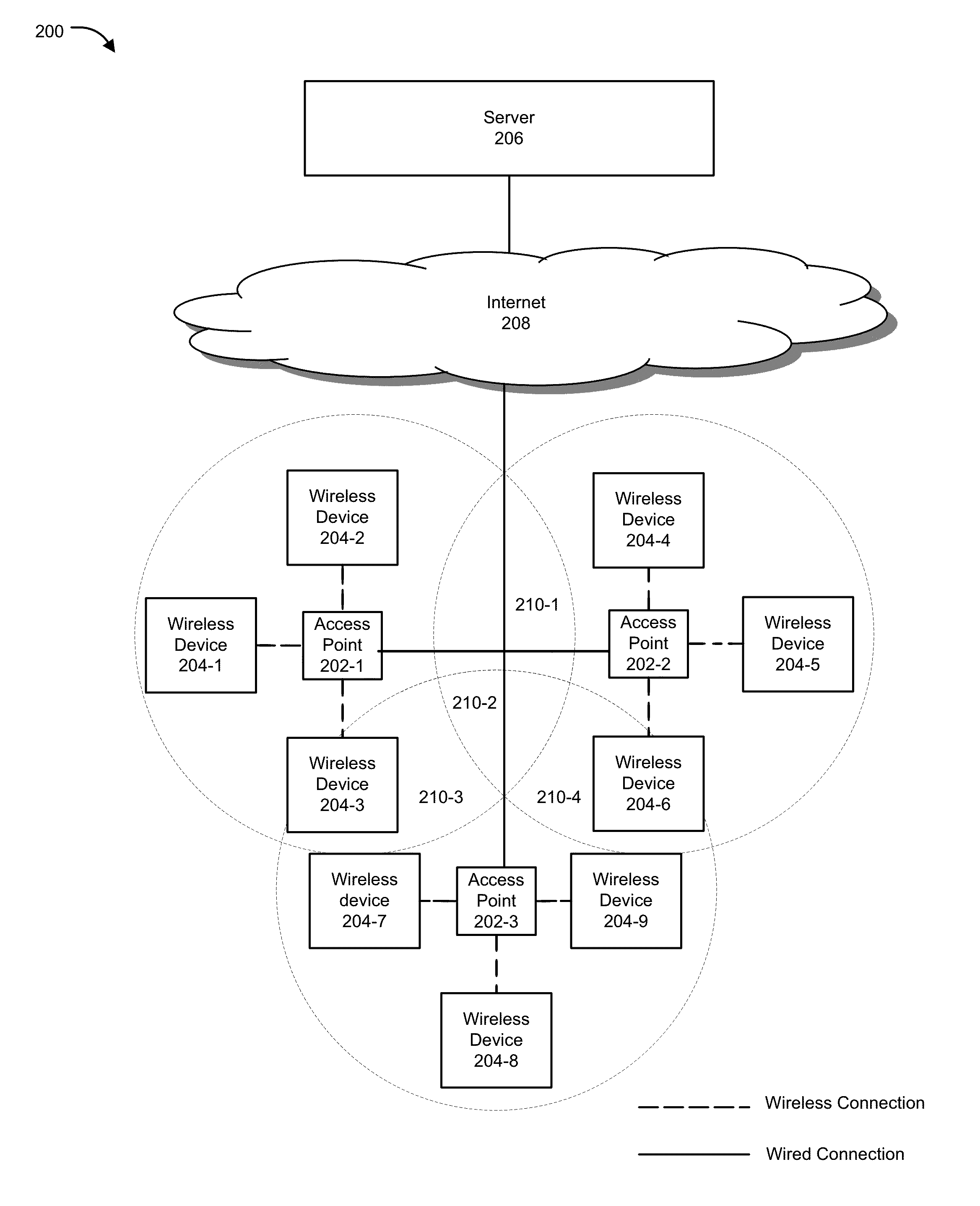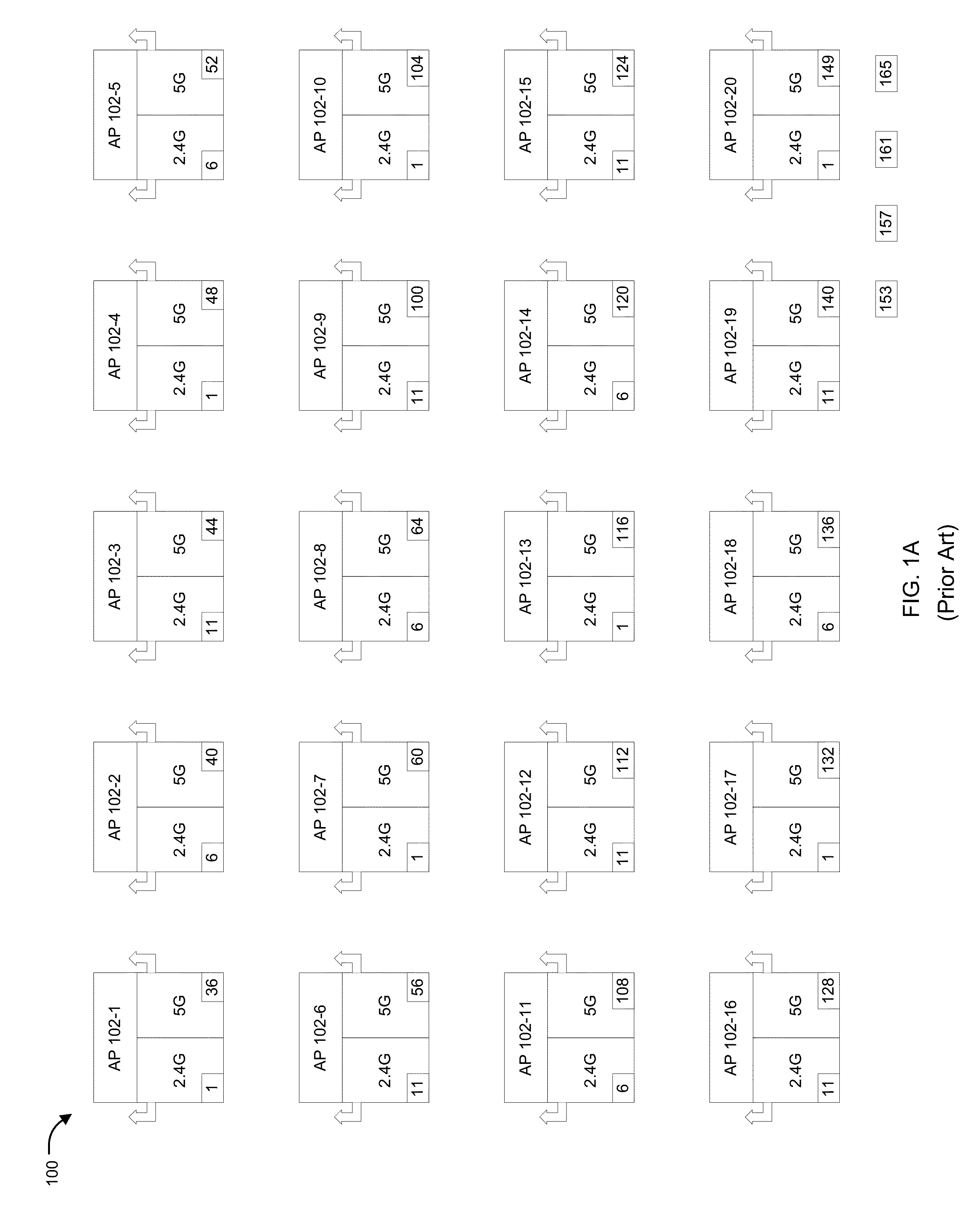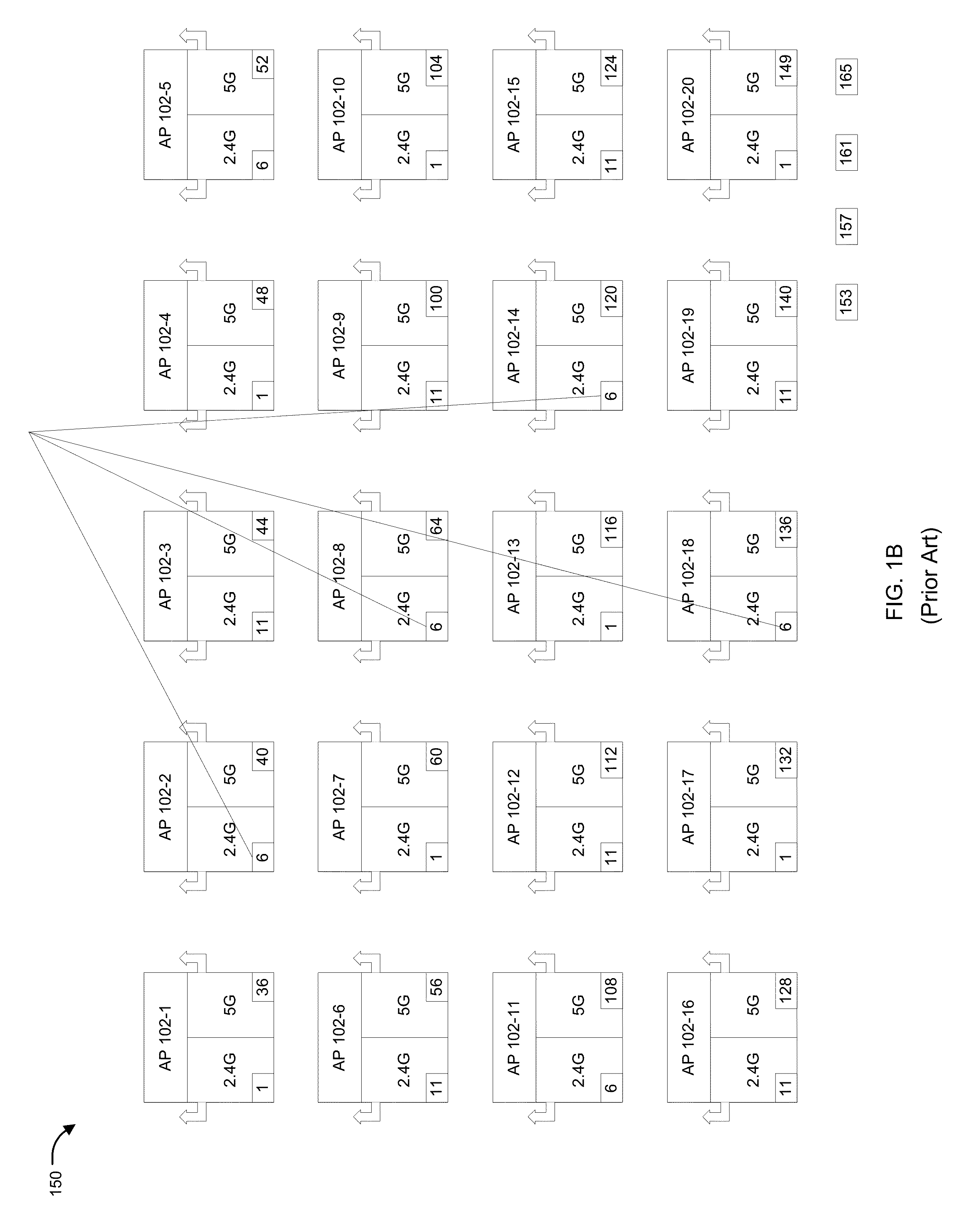Wireless radio access point configuration
a wireless radio and configuration technology, applied in the field of computer networks, can solve the problems of .4 ghz radio aps, underutilization of potential bandwidth, and high cost of wireless network architecture, and achieve the effect of reducing gain loss
- Summary
- Abstract
- Description
- Claims
- Application Information
AI Technical Summary
Benefits of technology
Problems solved by technology
Method used
Image
Examples
Embodiment Construction
[0028]Methods and systems are described for configuring an access point (AP) so as to optimally use channels of AP radios, prevent co-channel interference and also address antenna coupling in order to reduce interference between two radios transmitting and receiving at the same time on same channel or adjacent channels. Embodiments of the present disclosure generally relate to methods and systems for implementing dual-radio access points in a wireless network configuration. Various embodiments of the present disclosure relate to methods and systems for configuring, arranging, placing or otherwise locating radio access points in a manner that allows optimum utilization of available radio channels, and have lower channel interference for a given coverage area. One aspect of the present disclosure provides a dual concurrent 5 GHz radio AP, wherein each 5 GHz radio of the AP is configured with a different channel in a manner such that overall throughput of the AP is maximized and co-cha...
PUM
 Login to View More
Login to View More Abstract
Description
Claims
Application Information
 Login to View More
Login to View More - R&D
- Intellectual Property
- Life Sciences
- Materials
- Tech Scout
- Unparalleled Data Quality
- Higher Quality Content
- 60% Fewer Hallucinations
Browse by: Latest US Patents, China's latest patents, Technical Efficacy Thesaurus, Application Domain, Technology Topic, Popular Technical Reports.
© 2025 PatSnap. All rights reserved.Legal|Privacy policy|Modern Slavery Act Transparency Statement|Sitemap|About US| Contact US: help@patsnap.com



